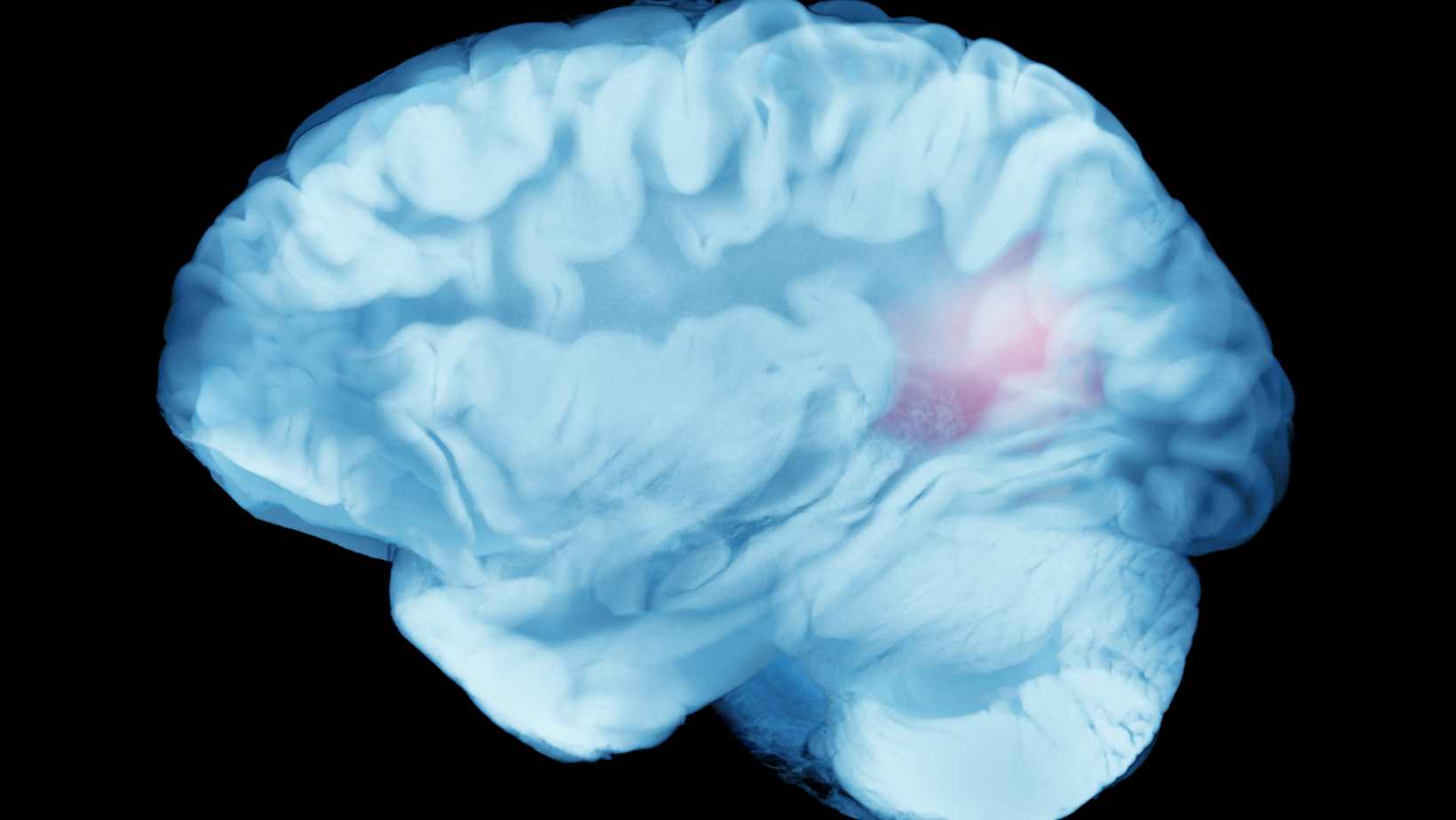Table of Contents
ToggleWhat is Epilepsy and Seizures?
Epilepsy and Seizures are neurological conditions affecting individuals of all ages, including children. These conditions can significantly impact the lives of children and their families, making it essential for parents, caregivers, and healthcare professionals to have a comprehensive understanding of their symptoms and available treatment approaches. In this blog, we will explore the world of epilepsy and seizures in children, with best neurologist in patna Dr Chandril Chugh exploring their symptoms and various treatment options.
Children are particularly susceptible to epilepsy and seizures due to the ongoing development of their brains. Seizures occur due to abnormal electrical activity in the brain, causing temporary disruptions in normal brain function. Epilepsy, on the other hand, is characterised by recurrent seizures. It is estimated that around 1% of children worldwide have epilepsy, making it one of this age group’s most common neurological disorders.
Recognising the symptoms associated with epilepsy and seizures in children is crucial for early identification and appropriate management. The symptoms can vary depending on the type of seizure a child experiences. It’s important to note that not all seizures involve convulsions or loss of consciousness. Common signs and symptoms include convulsions, loss of consciousness, changes in behaviour, staring spells, and temporary loss of skills or abilities.
Understanding Epilepsy and Seizures
Seizures occur due to abnormal electrical activity in the brain, resulting in temporary disruptions in normal brain function. Epilepsy is a neurological disorder characterised by recurrent seizures. In children, epilepsy often manifests during early childhood or adolescence. It is important to clearly understand epilepsy and seizures to recognise their symptoms and provide appropriate care for children affected by these conditions.
Seizures can be classified into two broad categories
Focal seizures, also known as partial seizures, occur when abnormal electrical activity is localised to a specific brain area. These seizures can manifest with or without loss of consciousness. The symptoms experienced during focal seizures can vary depending on the part of the brain affected. They may include sensory changes, motor movements, or alterations in perception or emotions.
Generalised seizures, on the other hand, involve abnormal electrical activity that spreads across the entire brain. These seizures often result in loss of consciousness and can be further classified into several subtypes. Absence seizures, also called petit mal seizures, are characterised by brief lapses in awareness, staring spells, and a temporary cessation of activity. Tonic-clonic seizures, formerly grand mal seizures, are the most well-known type of generalised seizure, featuring convulsions, loss of consciousness, and jerking movements.
In addition to these main types, there are other types of seizures that children can experience, such as atonic seizures (sudden loss of muscle tone), myoclonic seizures (brief muscle jerks), and tonic seizures (muscle stiffness). It is important to note that each child’s experience with seizures may vary and present with a combination of different seizure types.
Recognising the symptoms associated with seizures in children is crucial for early identification and appropriate management. It is important to be observant and seek medical attention if a child displays any signs of seizures, such as convulsions, staring spells, unresponsiveness, sudden changes in behaviour, or temporary loss of skills or abilities. Timely diagnosis and intervention can significantly impact the child’s quality of life and help manage the condition effectively.
Symptoms of Seizures
Seizure symptoms can vary depending on the type of seizure a child experiences. It’s important to note that not all seizures involve convulsions or loss of consciousness. Here are some common signs and symptoms:
Convulsions:
Convulsive seizures involve uncontrollable shaking and jerking movements. The child’s muscles may contract and relax rapidly, leading to twitching or convulsions of the arms, legs, or entire body. These convulsions can be intense and last for a few seconds to a few minutes.
Loss of Consciousness:
Some seizures can cause a child to lose consciousness, resulting in a blank stare or unresponsiveness. During these seizures, the child may appear “out of it” or unaware of their surroundings. They may not respond to stimuli or attempts to communicate.
Changes in Behavior:
Seizures may lead to sudden changes in behaviour, such as confusion, agitation, or aggression. A child experiencing a seizure might display unusual actions or emotions. They may become restless, anxious, or display aggressive behaviour without apparent cause. These changes in behaviour can be brief and may resolve once the seizure subsides.
Staring Spells:
Children may experience brief episodes of staring or daydreaming. These staring spells can be mistaken for inattentiveness or daydreaming but are a form of seizure activity. During these spells, the child may appear unresponsive, their eyes may be fixed, and they may not react to their surroundings.
Temporary Loss of Skills:
Seizures can cause temporary loss of skills or abilities, such as language regression or motor control difficulties. For example, a child who was previously able to speak may have difficulty forming words or sentences during or after a seizure. They may experience a temporary loss of coordination or have difficulty with fine motor skills.
It is important to note that the duration and intensity of seizures can vary. Some seizures may be brief and mild, while others can be more prolonged and severe. It is crucial to seek medical attention if a child displays any signs of seizures, as an accurate diagnosis and appropriate treatment are essential for managing their condition effectively.
Treatment Approaches for Epilepsy and Seizures
While there is currently no cure for epilepsy, several treatment approaches are available to help manage seizures effectively in children. The primary goal of treatment is to control seizures while minimising side effects and improving the child’s quality of life. Here are some common treatment options
Medication (Antiepileptic Drugs – AEDs)
Anti-seizure medications are the most common and effective treatment for epilepsy. These medications are prescribed based on the type of seizures a child experiences and their needs. The medications work by stabilising the electrical activity in the brain and reducing the likelihood of seizures. Working closely with a healthcare professional to find the right medication and dosage for the child is important. Regular monitoring is essential to assess the effectiveness of the medication and make any necessary adjustments.
Ketogenic Diet:
In some cases, a ketogenic diet may be recommended for children with epilepsy, especially those who do not respond well to medications or have specific seizures. The ketogenic diet is high in fats and low in carbohydrates, which promotes the production of ketones in the body. Ketones are believed to have anticonvulsant effects, helping to control seizures. This diet requires careful supervision and monitoring by a healthcare professional and a dietitian to ensure that the child receives proper nutrition while adhering to the specific dietary requirements.
Vagus Nerve Stimulation (VNS):
VNS is a non-drug treatment option involving the implantation of a vagus nerve stimulator device. This device delivers regular electrical impulses to the vagus nerve, sending these impulses to the brain. VNS helps to reduce the frequency and severity of seizures in some children with epilepsy. It is often considered when medications do not provide sufficient seizure control or have caused intolerable side effects. The device can be adjusted and programmed by a healthcare professional to meet the child’s specific needs.
Epilepsy Surgery:
In certain cases, when seizures are uncontrolled and originate from a specific, identifiable brain region, epilepsy surgery may be an option. The goal of epilepsy surgery aims to remove or modify the area of the brain responsible for generating seizures. The suitability for surgery is determined through comprehensive evaluation, including brain imaging, EEG monitoring, and other diagnostic tests. Epilepsy surgery is a complex procedure that requires expertise and should be performed by specialised healthcare professionals.
Responsive Neurostimulation (RNS)
Responsive neurostimulation is a newer treatment approach that involves implanting a device in the brain. This device detects and responds to abnormal electrical activity in real-time, delivering electrical stimulation to prevent seizures from occurring or to lessen their intensity. RNS is typically considered for children with focal seizures that are difficult to control with medications and may not be suitable candidates for surgery.
Conclusion
In conclusion, epilepsy and seizures can significantly impact the lives of children and their families. It is essential to be aware of the symptoms associated with seizures and to understand the available treatment options. If your child experiences seizures, seeking medical attention and consulting with a pediatric neurologist or epileptologist is important. They can provide an accurate diagnosis and develop an appropriate treatment plan tailored to your child’s needs.

This article is medically reviewed by Dr. Chandril Chugh, Board-Certified Neurologist, providing expert insights and reliable health information.
→ Book a consultation to discover which remedies suit your needs best.
About Author | Instagram | YouTube | Linkedin







